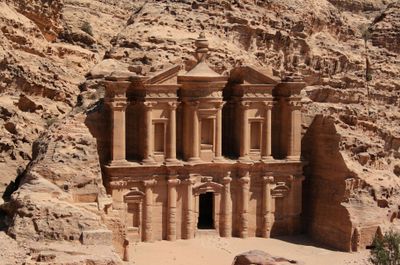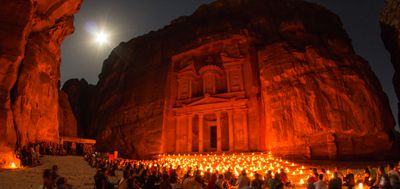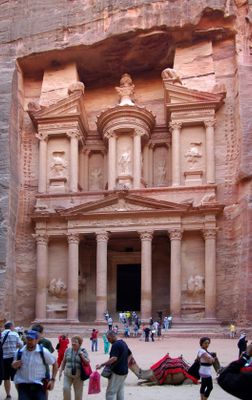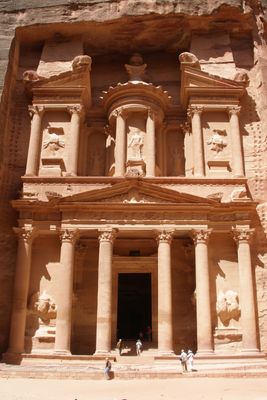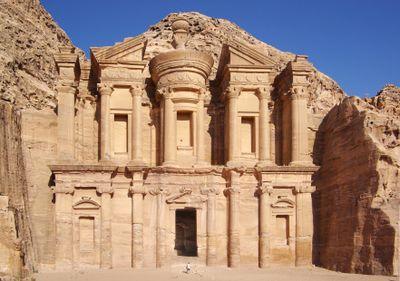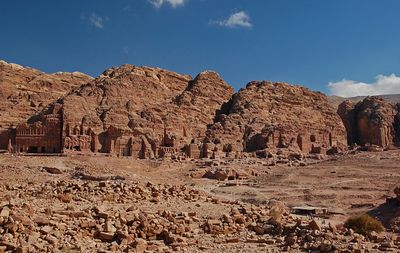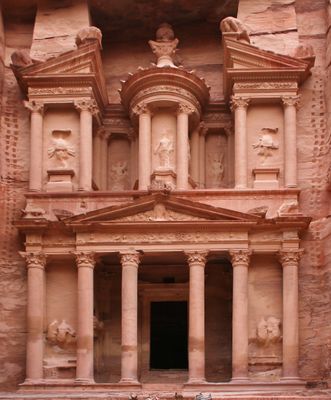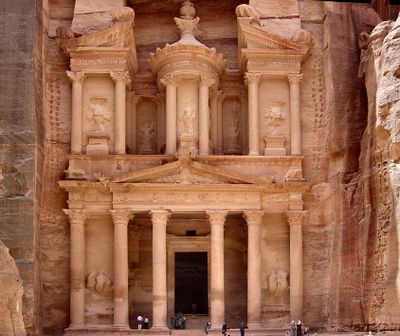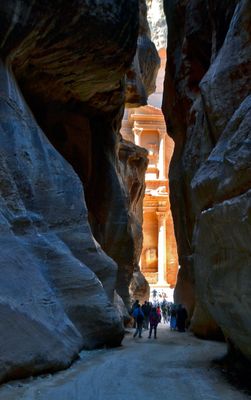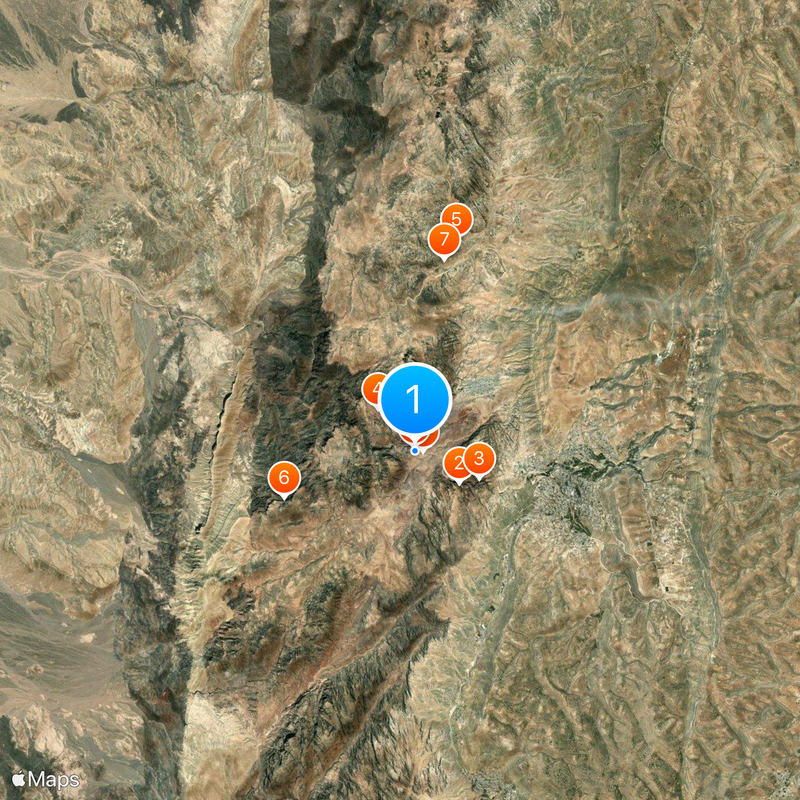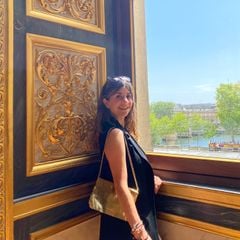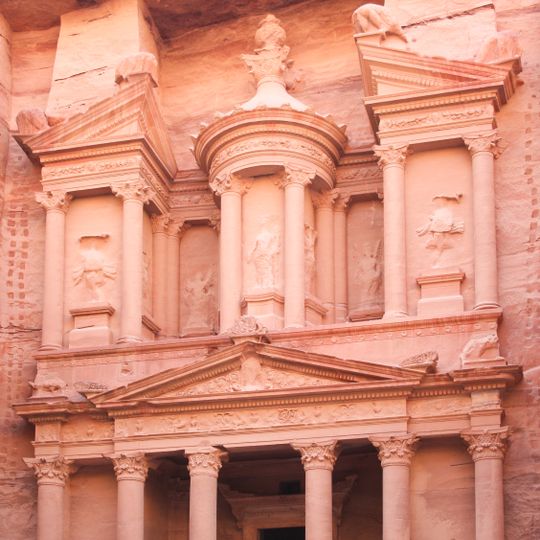
Petra, Archaeological site in Jordan
Petra is an archaeological site in Ma'an Governorate, Jordan, where more than 800 sandstone structures are scattered across a wide desert landscape. Facades carved directly into pink and orange rock faces display intricate patterns, Corinthian columns, and geometric forms, while the terrain spreads through canyons, plateaus, and mountain slopes.
The Nabataeans founded the settlement in the 5th century BC and developed it into the capital of their kingdom, which stretched from the Sinai Peninsula to Damascus. After Roman annexation in 106 AD, the city gradually lost importance, before earthquakes in the 4th and 6th centuries damaged many buildings and accelerated the decline.
Visitors experience the site today largely as a silent backdrop, where local Bedouin tribes offer guided walks, serve tea, and organize donkey or camel rides through the canyon. Occasional candlelit evening concerts take place at the Treasury, creating a special atmosphere and giving a sense of the place after nightfall.
Access begins through the Siq, a narrow gorge about one kilometer long, before reaching the Treasury, which takes roughly 45 minutes on foot. Sturdy footwear and sun protection are advisable due to the heat and uneven paths, while a complete visit to the Monastery requires three to four hours.
An elaborate water network of more than 200 cisterns, channels, and dams allowed the Nabataeans to collect and distribute rainwater across this dry terrain. Some of these ancient conduits still function during heavy rains today, demonstrating the engineering skill of a civilization that thrived in an area with very little annual precipitation.
Location: Ma'an Governorate
Inception: 800 BCE
Elevation above the sea: 1,350 m
Made from material: sandstone
Address: Jordan
Opening Hours: 06:00-17:00 "winter time" || 06:00-19:00 "summer time"
Phone: +96232156060
Website: http://visitpetra.jo
GPS coordinates: 30.32889,35.44028
Latest update: December 14, 2025 18:24

Photo license: CC BY-SA 3.0
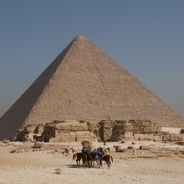
These archaeological sites document the development of human civilizations across thousands of years. They range from the earliest known temple structures like Göbekli Tepe in Turkey, dated to around 9500 BCE, to the preserved remains of Pompeii, frozen in time by a volcanic eruption in 79 CE. Each...
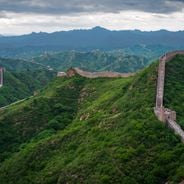
From the highest peaks to coastal cliffs, this collection brings together geographically significant observation points across all continents. The locations offer views of mountain ranges, waterfalls, deserts, oceans, and notable architectural structures. The selection includes the Great Wall near...

Al Khazneh
1.3 km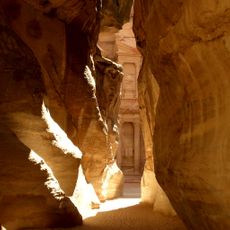
Siq
1.7 km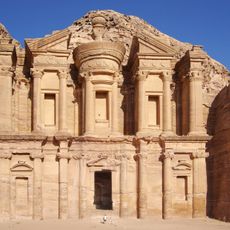
Ad Deir
1.4 km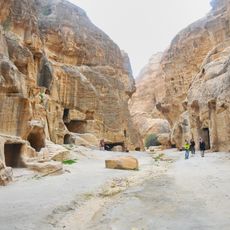
Little Petra
5.2 km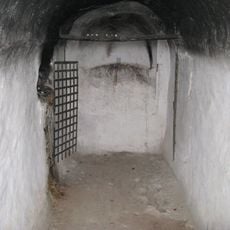
Tomb of Aaron
3.4 km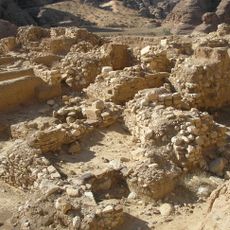
Beidha
4.7 km
Petra Pool and Garden Complex
213 m
Qasr al-Bint
90 m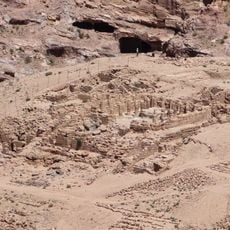
Temple of the Winged Lions
283 m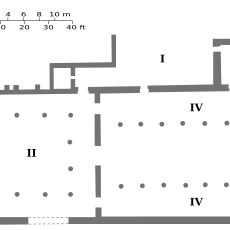
Church of Petra
443 m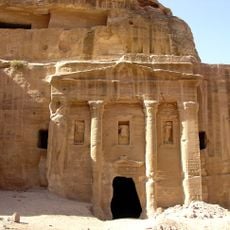
Tomb of the Roman Soldier
1 km
Petra Theatre
783 m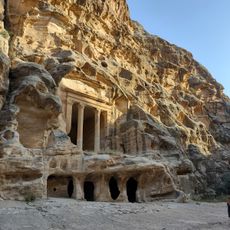
Temple / Colonnaded Triclinium
5.1 km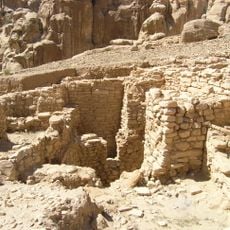
Ba'ja
9.6 km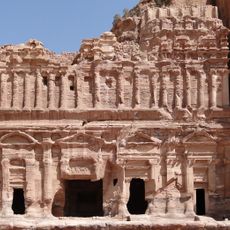
Palace Tomb
926 m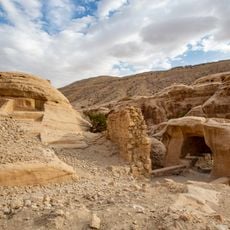
Wu’era Castle
2.5 km
Urn Tomb
876 m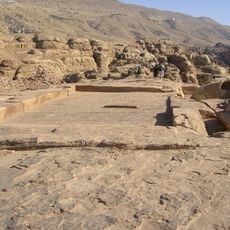
High Place of Sacrifice
1 km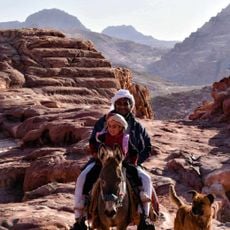
Royal Tombs
1 km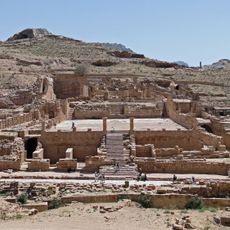
Great Temple
195 m
The Lion Triclinium
702 m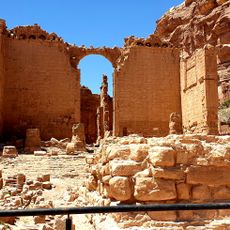
Temple of Dushares, Petra
68 mJabal Um el Biyar
668 m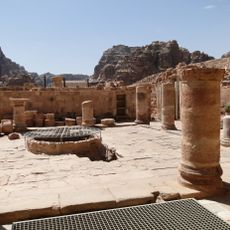
Byzantine Church, Petra
452 m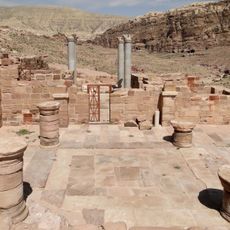
Blue Chapel, Petra
463 mStation of Sabinos Alexandros in Siq/Petra
2 kmKhashm aş Şawwānah
6.9 kmSanctuary , Petra
1.6 kmReal people, real opinions — but not verified.
Visited this place? Tap the stars to rate it and share your experience / photos with the community! Try now! You can cancel it anytime.
I traveled in March 2025 when there was no one else, so we need to continue supporting Jordanian tourism and the tickets are cheap!!
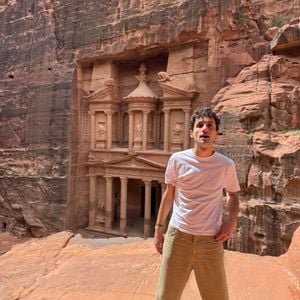
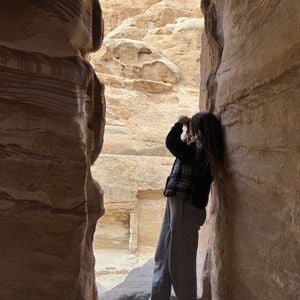
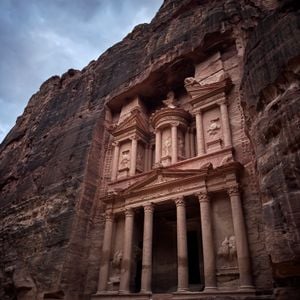
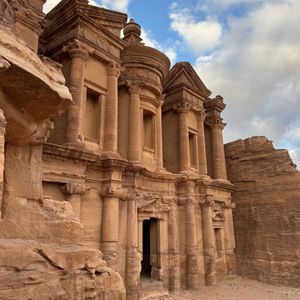
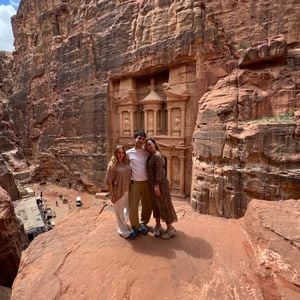
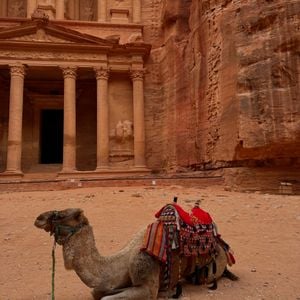
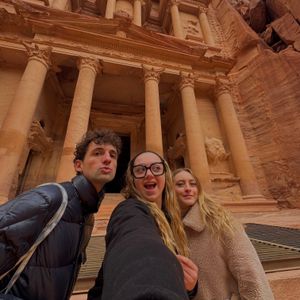
As wonderful to see as one can imagine!
Discover hidden gems everywhere you go!
From secret cafés to breathtaking viewpoints, skip the crowded tourist spots and find places that match your style. Our app makes it easy with voice search, smart filtering, route optimization, and insider tips from travelers worldwide. Download now for the complete mobile experience.

A unique approach to discovering new places❞
— Le Figaro
All the places worth exploring❞
— France Info
A tailor-made excursion in just a few clicks❞
— 20 Minutes
